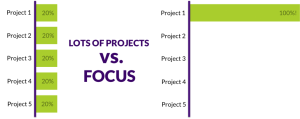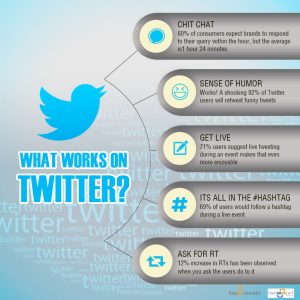
The crystal ball seems a bit foggy recently. Is Tom Brady retired? Is Bitcoin a good buy? Will the Oscars ever be more exciting? Depending on the day, the answers could be both yes and no.
Over the past two years, we’ve witnessed unpredictable trends causing us to wonder what’s next?
The Great Resignation reports of late take me to our work nearly a decade ago, where we found through surveying employees and students that most applied to 70-80 jobs before finding themselves in a company that was… fine, but not great. It wasn’t for lack of skills or education, but rather the labor market was so tight people had to take what they could get. This daunting reality left us wondering, would it ever change?
Today, it’s a vastly different climate: falling birth rates, slowed immigration, record retirement, an exploding gig economy, and the workforce as we know it is hungry for talent. In America alone, there are 11 million vacant positions and only 6.5 million people to fill them. Suddenly, we’re in the middle of a talent crisis. Employees have unprecedented leverage, and the Great Resignation as we know it is just beginning.
What comes next? Let’s map it out.
Wave 1: Change by Force
Timeframe: 2020-present
When the pandemic first hit, employers had to make significant changes. The office was no longer safe, so millions of employees learned (some better than others) how to operate in a remote world.
Working online introduced a cocktail of complexities; for one, many bosses weren’t especially supportive or skilled in leading remote teams. This new work style propelled people to adjust their personal lives; many moved, others looked for different work, and some explored new ways of living.
These shifts birthed the first title wave of the Great Resignation, jump-started by 69 million Americans quitting or switching jobs in 2021. This mass exodus significantly altered work environments. For instance, an estimated 2 million women in the United States left their jobs (many to be full-time mothers) amidst the pandemic. Approximately 28.6 million Baby Boomers (those born between 1946 and 1964) retired by the third quarter of last year. The loss of these two demographics completely transforms our future work environment.
But it’s not all bad news; we were also propelled to rethink how we do and view work, from asynchronous workspaces, increased flexibility, and extensive work benefits. Consequently, leadership development kicked into overdrive; people found happier working situations and increased freedom.
Wave 2: Change by Choice
Timeframe: present – June 2022
As the office seems safe for return, employers across the country call their people back. To be clear, there are no outside forces mandating us back—leadership is.
Not surprisingly, there’s a mixture of reactions. Over the next couple of months, we’ll see even more people quit because they simply don’t want to come back to the workplace. Their new home in the country is far more comfortable, they will avoid their lengthy commute, and hey, the bathroom at home smells way better, right? Oh, and did I mention gas prices?
Interestingly enough, employees have the upper hand. Why? Companies are desperate for talent; so employees can pressure their bosses to allow flexibility. Duolingo CEO, Luis von Ahn, expresses the concern about being too “hardline.” Consequently, many companies are developing flexible systems and negotiable schedules for employees, including Wells Fargo, Ford, The Social Security Administration, and Microsoft.
Wave 3: Picking Favorites
Timeframe: June 2022 – December 2022
The third wave gradually happens. According to the U.S. Census Bureau, approximately 26.4 million people in the U.S. moved in 2021. We’ll see A-players putting their foot down to stay remote. Employers won’t have a choice but to let them work remotely if they want to keep them. But what happens to the rest of the office when the top dogs are allowed to work remotely? In short: animosity, disdain, and envy. Finally, frustration will boil over, and people will find flexible jobs.
Another (less likely) option is remote A-players might feel excluded from office conversations and cafeteria chat, missing out on opportunities, connections, belonging, and even productivity. There’s a strong chance many will move to all-remote companies combating work
Wave 4: Kicking the Can Down the Field (BONUS)
Timeframe: December 2022 – June 2023
In reality, many companies are still tying the carrot-and-stick methodology instead of investing in solid cultures employees want to join. Instead, they try luring top talent by waving bonuses and extra cash.
This is great for attracting talent—but not keeping it.
Those who forget to improve culture and workplace experience will see high turnover rates in the next 8-12 months because they hire people who aren’t a good fit. Essentially, there are two options to curb this: either companies invest in long-term leadership solutions or wait to see what happens if they don’t. My crystal ball doesn’t paint a very nice picture for those who don’t.
What happens next?
Workforce reconfiguration is not only overdue—but necessary for the workplace of the future. Imagine this: 100+ million people switching jobs working in an atmosphere lighting them up, coworkers they want to be around, and an environment encouraging their best work. This Great Resignation (Reconfiguration) will create better, happier teams, parents, and spouses with more energy and fulfillment and better work from coast to coast.
(13)






